Pruning is the most difficult, but most necessary event of all the techniques for caring for currants. Black currants differ in their biological characteristics from red and white ones, therefore the methods of pruning these species are different.
Basic rules for pruning currant bushes
Currant pruning is carried out annually. It consists in:
- cutting out all old branches (black currants are older than 6 years, white and red ones are older than 8-9 years);
- removing diseased branches completely or cutting them back to healthy wood;
- pruning branches infested with pests;
- pruning branches that thicken the bush and grow in its middle;
- cutting out all weak, thin and unproductive branches;
- removing dry, broken and non-fruiting stems.
The best time for work is late autumn, when the temperature rises no higher than 5-6°C. If the air temperature is above 8 °C, pruning is strictly prohibited. Since currants begin the growing season very early (the lower buds begin to grow at an average daily temperature above 0°C), you may not have time to complete the work in the spring. And if you carry them out late, it will harm the bushes and only delay their development, flowering and fruiting.
Determining the age of currant shoots
How to determine the age of a branch?
- The older the branch, the darker its bark. Young annual shoots have light brown bark, which becomes dark brown with age, then light gray. The oldest shoots have dark gray bark, sometimes orange dots appear on it - these are the fruiting bodies of a fungus that settles on dying wood.
- On young branches, as a rule, there is good growth, reaching a length of 17-20 cm. On old shoots it is small, usually up to 7-9 cm.
- The apical bud of a young branch is large (5-6 mm), in old branches it is small (no more than 2 mm), the lateral buds are also noticeably smaller.
- You can determine the age of a branch by its branching order. The basal shoot is of zero order and corresponds to the first year of life. The first branching is the branches of the first order, corresponding to the second year of life, etc.Accordingly, if there are 5 branches on a branch, therefore, it is a 5-year branch, etc.
- Along the rings on the bark of the stem. When growth begins in the spring, a small ring remains on the bark. The age of the branch is determined by their number: how many rings there are is the lifespan of the stem. Age is always calculated from the top of the shoot. For example, from the apical bud to the first ring - 1 year, from the first ring to the second - 2 years, etc.
At the 6th year of life (7th after planting the cuttings), anti-aging pruning of black currants begins. In red and white currants, fruit-bearing branches live longer and even 8-9-year-old shoots can produce good harvests. This type of currant is quite good at transferring the old branch to young growth (if there is one).
Blackcurrant pruning
Pruning black currants allows the bush to develop properly. It causes the growth of basal (zero) shoots, enhances branching, which ultimately leads to an increase in the size of the berries.
Biological features of culture
The productive period of black currants with proper care is 15-17 years. It is less durable than red and white and is significantly different from them in biological characteristics.
- Rooted cuttings in the first year of life (that is, in the same summer if planted in spring, or the next year if planted in autumn) grow rapidly upward. They do not branch and do not produce basal shoots.
- In the second year of life, the rooted cuttings begin to branch. This year is considered the first year of life of the bush. The young growth is very strong and robust.
- In the third year, the bush grows intensively, branches and produces its first small harvest.
- From the fourth year, black currants enter the period of full fruiting.3-4 year old shoots are the most productive branches of black currant. They produce the greatest yield on branches of the first and second orders of branching.
- During the fruiting period, clusters and 1-2 replacement shoots are formed from the flower buds, on which flower buds are again laid. During strong growth, fruit buds are laid along the entire length of the shoot, forming full clusters with large berries.
- When the branch ages (6 years), its growth is small, only 5-7 cm. On such branches numerous fruits with shortened replacement shoots are formed, on which a lot of weak clusters with small berries are formed.
- After 6 years of age, the branch is considered old. Its fruit clusters are formed on branches of 4-5 branching orders. All lower branches no longer have fruit branches.
- Fruit branches (fruitlets) of black currant are very short-lived, and within 1-2 years after fruiting they die. And since the growth on old branches is very weak, fewer fruits are laid, they are less developed, and the yield from them is much lower.
Due to its biological characteristics, black currants require annual pruning. In the first years of life, it is needed for enhanced growth of young shoots and the formation of bushes, and then for rejuvenation and maintaining productivity at the proper level.
How to prune black currants correctly
A blackcurrant bush takes 4-5 years to form. A properly formed bush should have 3-4 branches of different ages.
Currant pruning begins in the first year of the bush’s life (2 years after planting). Purchased seedlings with 2-3 shoots are shortened in the same year. The first pruning is carried out immediately after planting. Each shoot of the seedling is shortened by 3-5 buds.The weaker the growth on the shoots, the more it is shortened. Weak annual shoots have only 3-4 well-developed buds. Thin frail branches are completely cut out. In the first year, all shoots are shortened.
Young growth that appears the next year after rooting of cuttings or layering is shortened by 2-3 buds if it is strong and by 4-5 buds if it is weak. If the growth is very weak, this means that the crown is developing to the detriment of the root system and it is necessary to carry out severe pruning.
Crown formation
Starting from the second year of life (3rd year after planting the cuttings), pruning is carried out in the fall. If the currant bush gives weak growths, not exceeding 5-7 cm, then very strong pruning is done. Weak branches are removed completely, the rest are left with 2-3 buds on each branch. If next year the growth is again weak, then the bush is thrown away; it is unsuitable for obtaining good harvests. But usually, after such pruning, the currants give good growth and lay down a lot of fruit branches (fruits).
To form a full-fledged bush, starting from the 2nd year, 3-4 powerful healthy root shoots are left, the rest are cut out completely. First of all, weak, damaged branches are removed, then branches that grow inward, compete with each other and thicken the bush. After this, young growth is pruned.
It must be pruned, otherwise the stems will not branch and form fruit branches on which the harvest is formed. Any stem is cut off above the bud, leaving a stump of no more than 6 mm.
In the 2nd year, the currant bush, with proper pruning, has 3-4 basal shoots, on which good growth has grown.If the branch has a lot of young strong growth, then it is shortened by 2-4 buds, with average branching - by 1/4, with weak branching - by 1/2-2/3 of the length of the shoot. The shorter the young shoot, the more it is shortened and the weaker the growth, the more pruning is needed. The main criterion here is pruning to the first strong bud. In addition, without pruning, the shrub does not produce basal shoots.
For 3-4 years, the currant bush should consist of 8-12 well-branched basal shoots. Every year, all young growth is completely shortened. If last fall the shoot was not shortened, then next year the annual growth of this branch is severely pruned, regardless of its length. This will help awaken dormant buds on previous growths, and fruit branches will be laid on them. By the end of 4 years, if the measures are carried out correctly, the bush should have 10-15 well-branched shoots of different ages.
Anti-aging pruning of black currant bushes
Starting from the 6th year (7 after rooting of the cuttings), it is necessary to carry out anti-aging pruning. In the fall, old, unproductive branches are cut out; as a rule, they lack fruits. Remove 1-2 shoots every autumn, cutting at the base. If the branch is young but weak, there is little growth and fruit branches on it, then it is also removed. In addition, all diseased and pest-infested shoots are removed, regardless of their age. Branches growing inward are cut out, since they do not bear berries, and they only thicken the bush.
If the old branches practically no longer produce berries, and the growth on the young ones is small and weak, then the bush is completely cut out to the ground. When removing the stem to the base, in no case should you leave a stump; it will serve as a bait for such a dangerous currant pest as glassweed.
Next year, the roots will produce a sufficient number of basal shoots, from which 2-3 of the strongest are selected, the rest are removed. The remaining shoots are pruned in the fall, leaving only 3 buds; in subsequent years the crown is formed as usual.
When pruning blackcurrants, you should always be guided by the number and strength of fruitlets on the stems. If the yield on old branches is high, then they are rejuvenated. The ends of such stems are cut off along with weak growth until the first strong branching. In this case, pruning is done at an angle to the branching so that the remaining stump is as small as possible.
Thinning thickened bushes
Thickened currant bushes are very common, especially at the dachas of novice gardeners. Such currants bear fruit poorly and are also a source of spread of diseases and pests.
In dense bushes, thinning pruning is carried out: closely spaced branches that rub against each other are removed. Those branches whose growth is small are pruned to perennial wood. Stems lying on the ground must be removed. They can be quite productive, but when cultivating the soil under bushes, they are often damaged and become sources of infection. If the shoot is flexible enough and does not interfere much, then it can not be cut off, but tied to a peg.
Weak root shoots are cut out, leaving 2-3 strong renewal branches.
After thinning the bushes, their illumination increases, and, as a result, the quantity and quality of the harvest increases.
Rejuvenation of old bushes
Black currants live in nature for 20-25 years. In gardens its productive period is 15-17 years. An old bush, especially if it is a valuable variety, can be rejuvenated.Anti-aging pruning is carried out within 3 years, after which the currants produce decent yields with proper care.
In the 1st year, 1/3 of the old stems are completely cut out. In the fall of next year, pruning is carried out to 3 buds of the young shoots of renewal that have appeared. If there are many of them, then 3-4 of the strongest are chosen, the rest are removed. In the same autumn, another 1/3 of the old branches are cut out.
In the 3rd autumn, 3-4 replacement branches are again left, cutting them to 3 buds. Remove any remaining old stems. For newly emerging growth on young stems, pruning is carried out in the same way as for 2-3 year old bushes.
By the autumn of the 4th year, the currant will consist of 8-10 one- to three-year-old stems. It is extremely undesirable to cut out the entire bush at once; it is better to do it gradually. Such a bush will simultaneously rejuvenate and produce a harvest.
Sanitary pruning of currants
Sanitary pruning is best done in the spring when the buds open. At this time, it is very clear which stems are healthy and which are damaged. All diseased, weak, bare stems are immediately removed.
If last year's growth froze in winter, then pruning is carried out to healthy wood. If it grows poorly, you can pinch the apical bud, this stimulates branching.
Pruning red and white currants
Pruning red and white currants differs from that of black currants due to the peculiarities of the formation of flower buds.
Biology of culture
Red and white currants grow in one place for 20-25 years, the productive period is 18-22 years. Unlike black currants, fruit branches are formed only at the tops of the former one-year growth, where last year's wood borders on the wood of the growth. This is not one fruit branch, but a whole group of fruits.They live and bear fruit much longer than the black ones - 8-10 years, then die off. After this, the branch is considered old and must be cut out.
For 1-2 years of life, currants grow intensively and do not set fruits. When it begins to bear fruit, the growth of leaves on the lower parts of the branches stops and the bushes look somewhat bare.
The age of the stems of white and red currants is best determined by the annual rings. Count the number of rings starting from the top of the shoot.
Natural replacement of skeletal branches in white and red currants occurs more slowly than in black currants. One-year-old shoots never bear fruit; two-year-old shoots obtained by horizontal and arched layering bear fruit the next year, but their first harvest is very small. Bushes grown from cuttings produce their first harvest in 3-4 years.
Features of pruning red and white currants
The bush is formed within 3-4 years, then only thinning is carried out, preventing the bush from thickening. A fully formed bush should contain 23-27 shoots of different ages. Currant pruning is carried out annually in the fall. If the root growth is weak, then pruning can be done once every 2 years.
Bush formation
Immediately after planting cuttings or layering, the upper part of the stem is shortened, leaving only three buds above the ground. This is necessary for better branching of the bush. Further, throughout the life of the currant, growth is never cut off, since the entire harvest is formed here and, having cut off the top, you can forget about the berries.
If a young seedling with several shoots is planted, then 2-4 powerful branches are selected, the rest are cut to the ground, leaving no stumps.
It is very important that there are no stumps, otherwise the wood on them begins to rot and rot, fungal spores get into it, and pests settle in. In any case, such a stump will dry to the ground or to the nearest bud. If you cut the branch correctly to the ground or to the bud, leaving only 4-6 mm of the stem, then the wound will heal.
In the second and subsequent years, it is necessary to regulate the growth of root stems so that the bush does not thicken. Every year, 2-4 shoots are left with a growth of at least 40 cm, the rest are completely cut out. If young stems are not cut out annually, the bush thickens, weak zero growth dies and serves as a source of spread of diseases and pests.
Rejuvenating pruning of red currants
It needs to be carried out only after 9-10 years, when the aging of the branches begins. The yield on such branches decreases, the berries become smaller, and the annual growth of young branches is small. Such stems are cut to the base, but if there is a young strong branch or a top (a shoot growing vertically upward), then pruning can be done for transfer.
To do this, a one- to two-year-old replacement shoot or top is selected in the lower part of the stem and the old branch is cut out to the point where the shoot originates. The cut is made obliquely in the direction from the kidney. Next year, this shoot will begin to grow and branch intensively.
If translation is not possible, the old stems are completely cut out. In this case, you should definitely leave 3-4 replacement root shoots.
Branches located close to the ground are removed first; they are unproductive. Then the weak stems are cut out. If there are no fruits on the branch or very few of them, then the shoot is cut out completely.
Old bushes are rejuvenated in 3 steps, annually removing 1/3 of the obsolete branches and leaving young zero branches to replace them. It is not recommended to cut out the entire bush at once - this is very traumatic for currants, and the root system may not be able to withstand such a shock.
Pruning currants is not as easy as it seems at first glance. It requires skill, experience and a good knowledge of crop biology.
Pruning red currants
YouTube Embed: No video/playlist ID specified
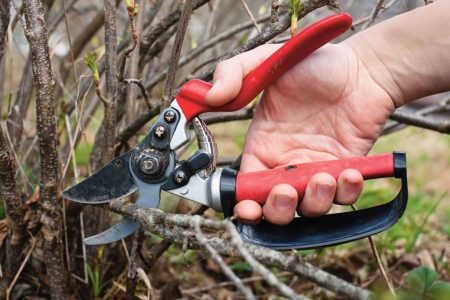

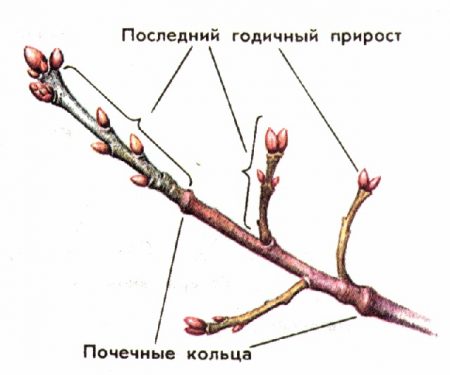
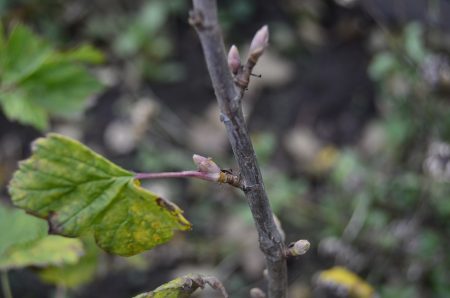
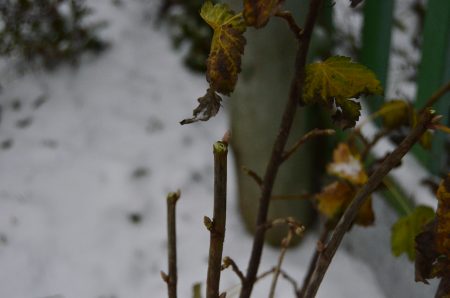
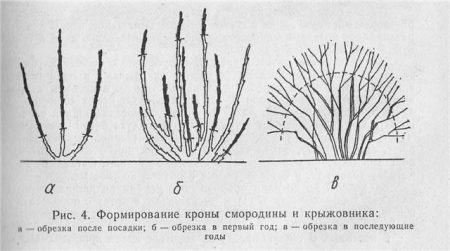

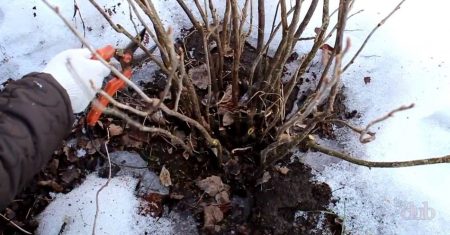
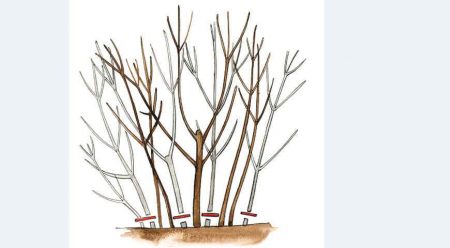
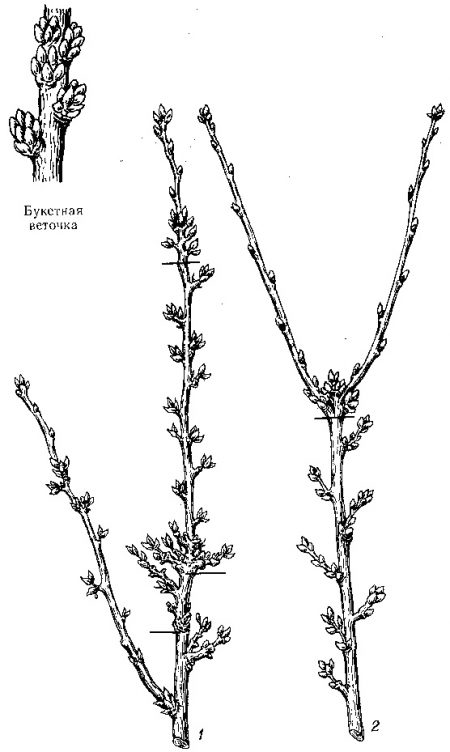
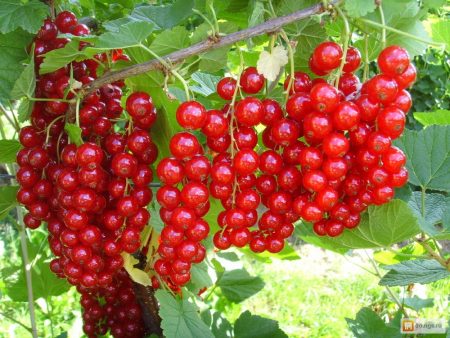
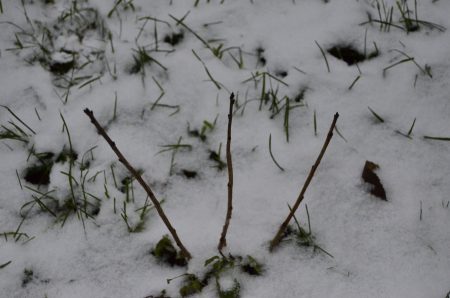
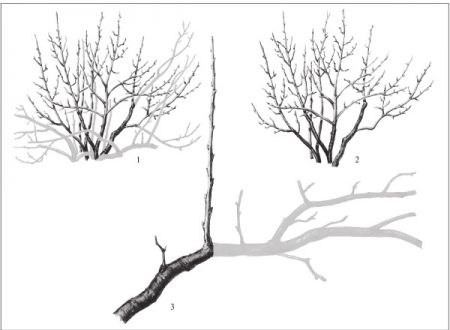

 CUCUMBERS NEVER GET SICK, I'VE BEEN USING ONLY THIS FOR 40 YEARS! I SHARE A SECRET WITH YOU, CUCUMBERS ARE LIKE THE PICTURE!
CUCUMBERS NEVER GET SICK, I'VE BEEN USING ONLY THIS FOR 40 YEARS! I SHARE A SECRET WITH YOU, CUCUMBERS ARE LIKE THE PICTURE! You can dig a bucket of potatoes from each bush. Do you think these are fairy tales? Watch the video
You can dig a bucket of potatoes from each bush. Do you think these are fairy tales? Watch the video
 How our fellow gardeners work in Korea. There is a lot to learn and just fun to watch.
How our fellow gardeners work in Korea. There is a lot to learn and just fun to watch. Eye trainer. The author claims that with daily viewing, vision is restored. They don't charge money for views.
Eye trainer. The author claims that with daily viewing, vision is restored. They don't charge money for views. A 3-ingredient cake recipe in 30 minutes is better than Napoleon. Simple and very tasty.
A 3-ingredient cake recipe in 30 minutes is better than Napoleon. Simple and very tasty. Therapeutic exercises for cervical osteochondrosis. A complete set of exercises.
Therapeutic exercises for cervical osteochondrosis. A complete set of exercises. Which indoor plants match your zodiac sign?
Which indoor plants match your zodiac sign? What about them? Excursion to German dachas.
What about them? Excursion to German dachas.